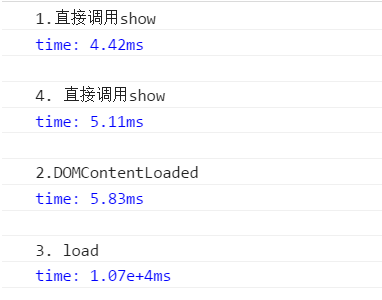1. 函数声明提升
function test() { foo(); // TypeError "foo is not a function" bar(); // "this will run!" var foo = function () { // function expression assigned to local variable 'foo' alert("this won't run!"); } function bar() { // function declaration, given the name 'bar' alert("this will run!"); } } test();
实际上是这样的,
function test() { var foo; var bar; bar = function () { // function declaration, given the name 'bar' alert("this will run!"); } foo(); // TypeError "foo is not a function" bar(); // "this will run!" foo = function () { // function expression assigned to local variable 'foo' alert("this won't run!"); } } test();
2. 充分利用 Object.prototype.toString.call();方法,你会发现他是多么强大!

3. 命名函数表达式中的函数名只对内有效,对外是看不见的。
var f = function foo(){ return typeof foo; // foo是在内部作用域内有效 }; // foo在外部用于是不可见的 typeof foo; // "undefined" f(); // "function"
4. 合理使用try catch , 他不会影响代码的正常运行。
try { console.log(a); } catch (e){ console.log(e); } var b = 10; b += 50; console.log(b);
5. 注意 DOMContentLoaded和load的区别,前者是针对document而言的, 渲染树生成即触发。 而后者是针对window的,需要所有的资源都下载结束才触发。
<!DOCTYPE html> <html lang="en"> <head> <meta charset="UTF-8"> <title>fd.html</title> </head> <body> <img src="http://u.candou.com/2015/0906/1441528903323.jpg" alt=""> <img src="http://lovelace-media.imgix.net/uploads/812/3a94d580-7e7a-0133-9f0b-0af7184f89fb.gif?" alt=""> <div class="dfa"></div> <script> console.time("time"); function show(str) { console.log(str); console.timeEnd("time"); console.log(" "); } show("1.直接调用show"); document.addEventListener('DOMContentLoaded',function () { show("2.DOMContentLoaded"); }, false); window.addEventListener('load',function () { show("3. load"); }, false); show("4. 直接调用show"); </script> </body> </html>
结果如下;

6.